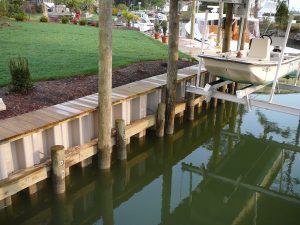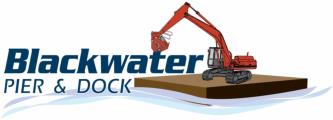
We build quality structures that endure Virginia’s unpredictable coastal weather. We conduct business in an ethical manner, achieving our goals and yours by being the very best in our field.
Erosion
Rip Rap
A permanent, erosion-resistant ground cover of large, loose, angular stone that is used to protect slopes, streambanks, channels, or areas subject to erosion by wave action. Rock Rip Rap protects soil from erosion due to concentrated runoff. It is used to stabilize slopes that are unstable due to seepage. It is also used to slow the velocity of concentrated runoff which in turn increases the potential for infiltration.
Rock Revetment
Revetments are onshore structures with the principal function of protecting the shoreline from erosion. Revetment structures typically consist of a cladding of stone, concrete, or asphalt to armor sloping natural shoreline profiles.
Marsh Toe Sill
A sill (a.k.a.: Marsh Sills or Sheetpile Sills, previously known as Marsh Enhancement Breakwaters) is a shore-parallel, wood or rock structure that is designed to protect existing or newly planted wetland vegetation. A sill is placed offshore of existing marsh to help reduce the erosion of the waterward edge (escarpment).
Breakwater
A breakwater (a.k.a.: Wave Attenuator, Wave Breaks, Wave Fence) is a shore-parallel non-shore-connected structure, designed to trap sand and to attenuate wave energy. Breakwaters are typically constructed of stone, with multiple structures detached or gapped with a distance equal to length of one individual structure. Breakwaters reflect and dissipate wave energy creating a lower wave energy area landward of the structure.
Living Shoreline
A shoreline erosion control management practice which also restores,
enhances, maintains or creates natural coastal or riparian habitat, functions and processes. Coastal and riparian habitats include but are not limited to
intertidal flats, tidal marsh, beach/dune systems, and bluffs. Living shorelines may include structural features that are combined with natural components
to attenuate wave energy and currents”.
Coir Logs
Beach enhancement is typically used to prevent shoreline erosion or to enhance beach areas that have been eroded. Bioengineered natural coastal buffers combine plantings with erosion-control products made of natural, biodegradable materials, such as fiber or coir logs and fiber blankets.
Oyster Shell Bags
Living Shorelines contain natural features including predominantly plants. At a site with low-moderate wave energy and a gradual slope, native plants can be used successfully to stabilize the shoreline with their roots while providing habitat for fish and wildlife. The plants take up nutrients and deliver leaf litter to the adjacent waterway. Certain plants are suitable within (aquatic), close to, or away from the saltwater found along coasts (refer to the lists of suggested plants by state region). Oyster reef at the base of the planted slope provides a wave break, water filtration, and habitat for aquatic species.
Bulkheads
A bulkhead (a.k.a.: Vertical Structure, Seawall) is any shore-parallel vertical structure designed to prevent erosion, overtopping, flooding, or sliding of the land. Bulkheads are usually placed along an eroding bank or escapement to hold back the land from the water and prevent erosion. Bulkheads are a long lasting, durable structure that can stand up to moderate to high wave energy; but they also prevent the natural migration of wetland vegetation.
We specialize in
